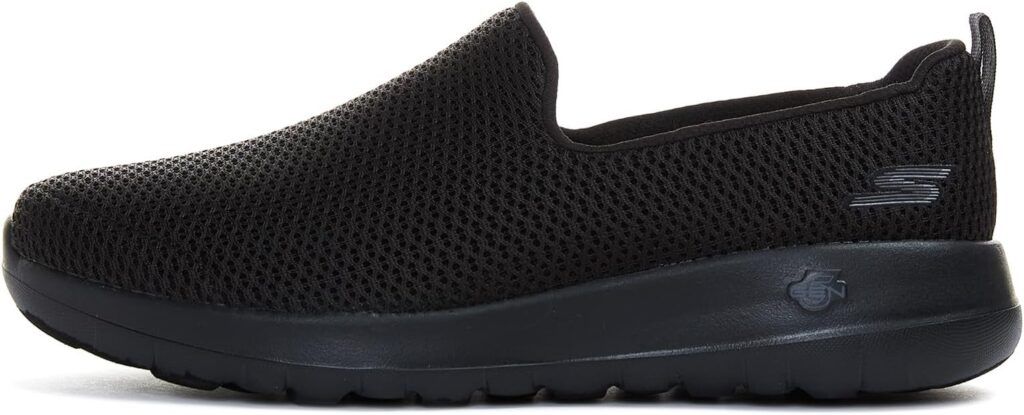In today’s fast-paced world, people often seek efficient and accessible ways to improve their cardiovascular health and overall fitness. Cardiovascular exercise plays a vital role in maintaining a healthy heart and circulatory system, but not everyone enjoys high-impact workouts or has access to specialized equipment. This brings us to the question: is walking a cardio exercise?
In this article, we will explore the benefits of cardiovascular exercise, delve into the advantages of walking as a cardio workout, understand how walking affects the cardiovascular system, discuss its potential for weight loss and overall fitness, explore other cardio exercises for variety, and conclude with a summary of the power of a simple step.

In this busy world, finding time for exercise is crucial for maintaining good health. Engaging in cardiovascular exercise is essential as it helps improve heart health, increases stamina, and enhances overall well-being. While there are various forms of cardio workouts, walking stands out as a simple and accessible option that can be incorporated into anyone’s daily routine. Let’s dive into the benefits of cardiovascular exercise before exploring the effectiveness of walking as a cardio exercise.
Benefits of Cardiovascular Exercise
Definition of Cardiovascular Exercise
Cardiovascular exercise, commonly referred to as cardio or aerobic exercise, involves activities that raise the heart rate and increase oxygen consumption, thereby improving the efficiency of the heart and lungs. This type of exercise helps strengthen the cardiovascular system and contributes to better overall health.
Importance of Cardiovascular Health
Maintaining good cardiovascular health is crucial as it reduces the risk of heart disease, stroke, and various other health conditions. Regular cardio exercise promotes weight management, improves mood, boosts energy levels, and enhances sleep quality. It also aids in reducing stress and anxiety while increasing cognitive function.
Walking as a Cardio Exercise
Overview of Walking
Walking is a low-impact exercise that can be performed by people of all ages and fitness levels. It requires no special equipment, making it an easily accessible form of exercise. Whether walking outdoors, on a treadmill, or around the neighbourhood, this simple activity offers numerous health benefits.
Benefits of Walking as Cardio Exercise
Increased Heart Rate
One of the key advantages of walking as a cardio exercise is its ability to increase the heart rate. When we engage in brisk walking, the heart pumps at a faster rate, delivering oxygen-rich blood throughout the body. This elevated heart rate strengthens the cardiovascular system, enhancing its efficiency and promoting better heart health. Regularly raising the heart rate through walking helps to improve endurance, allowing individuals to engage in other physical activities for longer periods without experiencing excessive fatigue.
Calorie Burning
In addition to cardiovascular benefits, walking as a cardio exercise also aids in calorie burning and weight management. When we walk at a brisk pace, our bodies burn calories to fuel the activity. This calorie expenditure contributes to creating a calorie deficit, which is essential for weight loss or weight maintenance. Incorporating regular walks into your routine, especially when combined with a healthy diet, can support your weight management goals.
Bone density
Furthermore, walking is a weight-bearing exercise, which means it places stress on the bones, helping to maintain bone density. This is particularly beneficial for preventing conditions like osteoporosis, which can lead to weakened bones and an increased risk of fractures. By incorporating walking into your fitness regimen, you provide your bones with the necessary stimulus to remain strong and healthy, reducing the likelihood of bone-related issues as you age.
Suitable for sensitive joints
Moreover, walking is a low-impact exercise that puts minimal stress on the joints. Unlike high-impact activities such as running or jumping, walking provides a gentler workout that is less likely to cause strain or injuries. This makes it an excellent option for individuals with joint sensitivities, those recovering from injuries, or individuals seeking a more accessible form of exercise.
Simplicity and Accessibility
Another advantage of walking is its simplicity and accessibility. It requires no special equipment, making it a convenient exercise option that can be performed virtually anywhere. Whether you choose to walk outdoors in nature, utilize a treadmill at the gym, or take laps around your neighbourhood, you can easily incorporate walking into your daily routine. This accessibility removes barriers and excuses, making it more likely for individuals to engage in regular physical activity.
How Walking Affects the Cardiovascular System
Walking has a profound impact on the cardiovascular system, positively influencing both the heart and lungs. By engaging in regular walking, individuals can experience notable improvements in their heart rate, blood flow, and lung capacity, all of which contribute to overall cardiovascular health.
Increased Heart Rate and Blood Flow
One of the key ways walking affects the cardiovascular system is by increasing the heart rate. When we engage in brisk walking, our bodies demand more oxygen and energy to fuel the activity. As a response, the heart pumps blood at a faster rate to deliver oxygen and nutrients to the working muscles. This increased heart rate not only strengthens the heart muscle itself but also improves its efficiency in pumping blood throughout the body. The enhanced blood flow reaches all parts of the body, promoting the proper function of muscles, organs, and tissues.
Treat Yourself to These Must-Have’s

Skechers Women’s Go Walk Joy Sneaker

Columbia Women’s Newton Ridge Lightweight Waterproof Shoe Hiking Boot

KEEN Men’s Targhee 2 Low Height Waterproof Hiking Shoes

Timberland Men’s White Ledge Mid Waterproof Hiking Boot
Disclaimer: This post may contain affiliate links. For more information please refer to our Affiliate Disclosure.
Improved Lung Capacity
Another way walking influences the cardiovascular system is through its impact on lung capacity. As we engage in brisk walking, our breathing rate increases to accommodate the higher demand for oxygen. This leads to deeper and more efficient breathing, allowing for a greater volume of air to enter and exit the lungs. This increased ventilation improves the oxygenation of the blood and enhances the body’s ability to expel carbon dioxide, a waste product of metabolism. By improving lung capacity, walking helps maintain optimal respiratory function and promotes overall respiratory health.
The combined effects of increased heart rate and improved lung capacity during walking result in a more efficient cardiovascular system. Regular walking exercises the heart muscle, making it stronger and more resilient. This can lead to a lower resting heart rate and improved heart health over time. Additionally, the enhanced lung capacity allows for better oxygen exchange, which supports the body’s energy production and overall vitality.
It’s important to note that the cardiovascular benefits of walking are not limited to the time spent actively walking. The positive effects extend beyond the immediate exercise period, leading to long-term improvements in cardiovascular health with consistent and regular walking routines.
Walking for Weight Loss and Overall Fitness
Walking can be an effective tool for weight loss and overall fitness. Regular brisk walking burns calories, contributing to a calorie deficit and potential weight loss. It also helps build lean muscle, boost metabolism, and improve body composition. Combined with a balanced diet, walking can play a significant role in achieving weight loss goals.
Other Cardio Exercises for Variety
While walking offers numerous benefits, it’s always beneficial to vary your workout routine to target different muscle groups and prevent monotony. Consider incorporating other cardio exercises such as running, cycling, swimming, dancing, or using cardio machines at the gym to add variety and keep your fitness journey exciting.
Conclusion
In conclusion, among all the benefits of walking, it is also a valuable cardio exercise that can positively impact your cardiovascular health, aid in weight loss, and improve overall fitness. Its accessibility, simplicity, and low-impact nature make it an ideal choice for individuals of all ages and fitness levels. By incorporating regular walks into your routine, setting goals, and challenging yourself, you can experience the transformative power of this simple step towards a healthier life.
FAQs
Is walking as effective as running for cardio?
While running generally burns more calories and elevates the heart rate to a higher level, walking can still be an effective form of cardio exercise. It offers a lower-impact option and can be sustained for longer durations, making it suitable for individuals with joint issues or those seeking a gentler workout.
Can walking help reduce the risk of heart disease?
Yes, walking regularly can help reduce the risk of heart disease by improving cardiovascular health, lowering blood pressure, and managing weight. It also contributes to overall fitness and well-being.
How long should I walk for cardio benefits?
The recommended duration for cardio benefits through walking is at least 150 minutes of moderate-intensity walking per week. This can be divided into 30 minutes of walking on most days of the week.
Can walking alone be enough for weight loss?
Walking alone can contribute to weight loss when combined with a balanced diet and overall calorie deficit. While more intense exercises may lead to faster results, walking is a sustainable and accessible option that can support weight loss efforts.
Are there any precautions to consider when walking for cardio?
It’s important to wear comfortable and supportive footwear while walking to avoid strain or injuries. If you have any underlying health conditions or concerns, it’s advisable to consult with a healthcare professional before starting a new exercise routine.
